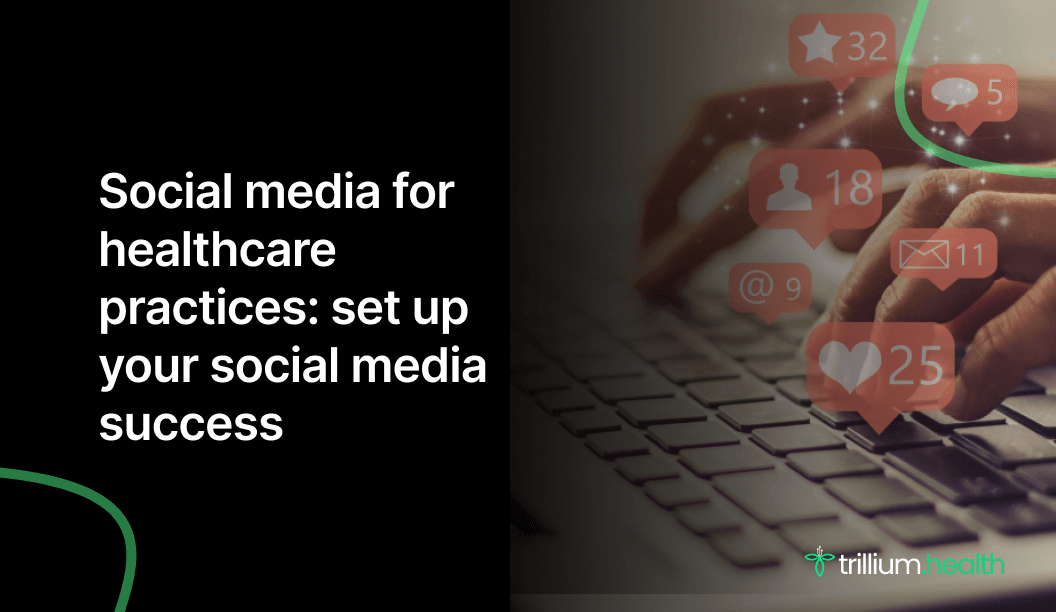Social media has been around for decades and continues evolving to influence consumers in many ways. It has changed how the world receives, shares, and absorbs information. Healthcare is no stranger to social media; 80% of people use social media for healthcare-related information.
Social media has become an increasingly important tool for healthcare providers and clinics to connect with patients, provide health-based information, build brands, and promote services.
With the opportunity to reach a broad target audience and engage and educate them, social media has become a critical part of healthcare practices. Patients can ask questions, provide feedback, and share their experiences, which can help providers improve their services and strengthen patient relationships.
There is no stepping back from the growth of healthcare in the digital age. Let’s look into the role of social media in healthcare and how to get your practice started with social media.
This Blog Includes:
What is the role of social media in healthcare?
Social media today is the pinnacle of healthcare marketing. It provides healthcare providers and organizations a platform to share information, promote healthy behaviors and lifestyles, and engage with patients in real time.
It also enables them to communicate with patients during public health crises, such as pandemics, manage their online reputation, conduct research, and gather patient feedback. You need an active social media presence to connect with patients, improve patient outcomes, and stay competitive in an increasingly digital world.
“18 to 24 are twice as likely to use social media to discuss health issues than people ages 45 to 54.”
While the patient demographics depend on the practice specialty, every healthcare practice provides content that is:
- Factual and educating
- Engaging and raising awareness
- Informative and current health news
- Compliant with HIPAA rules and regulations
- Highlighting staff and provider accomplishments
Getting started on social media for healthcare practices
Social media has transformed how people communicate and connect; the healthcare industry is no exception.
However, many healthcare providers are still hesitant to jump into the world of social media due to concerns about privacy, compliance, and security. While these concerns are valid, they can be addressed using a strategic approach to social media.
In this guide, we’ll provide healthcare providers and practices with a roadmap for getting started on social media. By following these steps, healthcare practices can confidently enter the world of social media and use it to enhance patient care and improve patient outcomes.
Analyze target audience
Analyzing your target audience is a crucial first step in creating a successful social media strategy for your healthcare practice. It involves gathering information about your current and potential patients, including their age, gender, location, interests, and healthcare needs.
By understanding your target audience, you can create content and messaging that resonates with them and increases the likelihood of engagement and conversions.
For instance, for a cardiology clinic, you may focus on catering your content to ages 40 and above, where over 40% of patients are willing to follow their physicians on social media. If you focus on children’s health, your target audience will mainly consist of parents, and studies indicate 68% of parents use social media for healthcare information.
Set up social media accounts
Here comes the vital step, creating social media account. As each platform is unique, learning about them is best before cooking up marketing strategies.
Choose social media platforms that best suit your practice and create or claim your existing account. The most popular platforms are Facebook, Instagram, Twitter, Youtube, LinkedIn, and Tik Tok.
Write a brief bio description
Your bio description on every social media platform tells everyone who you are, what you do, and what makes your practice unique. It is often the first thing that patients see when they come across your social media profile and can be a powerful tool for making a positive first impression.
When writing a bio description for your social media profiles, keep it concise and informative. You want to provide enough information to entice potential patients to learn more about your practice, but not so much that they are overwhelmed or bored.
Set profile and cover photo
When setting up your healthcare practice’s social media profiles, choosing the right profile and cover photo can be critical to establishing a robust online presence. Your profile photo is the primary image that represents your practice across all social media platforms.
A clear professional headshot will be ideal if your business account represents you as the provider. Clinics also often keep their logo as their profile photo.
Whereas for the cover photo, i.e., the banner image at the top of the profile on Facebook, Youtube, and Twitter, displaying your staff, clinic, or a lifestyle image that best represents your brand is best.
Schedule posts in advance
Scheduling social media posts in advance is a valuable tool for healthcare practices looking to establish a consistent and engaging presence on social media.
By scheduling posts ahead, you can ensure that your social media channels remain active even during busy times and avoid the stress of coming up with content on the fly.
By using a social media management tool, choosing the right posting frequency and timing, mixing up your content, and monitoring and adjusting as needed, you can build a strong and effective social media strategy for your practice.
A few content ideas that would work for your practice are:
- Patient testimonials
- Blog posts
- Health and lifestyle tips
- Products and services information
- Staff and office events photos and videos
- PR articles
The future healthcare with social media
The benefits gained from social media platforms surpass all its challenges. The constant evolution of technologies and strategies continues to improve patient care and patient engagement online.
Healthcare providers that stay up-to-date on digital trends and adapt their social media strategies accordingly will be well-positioned to succeed in the years ahead.



